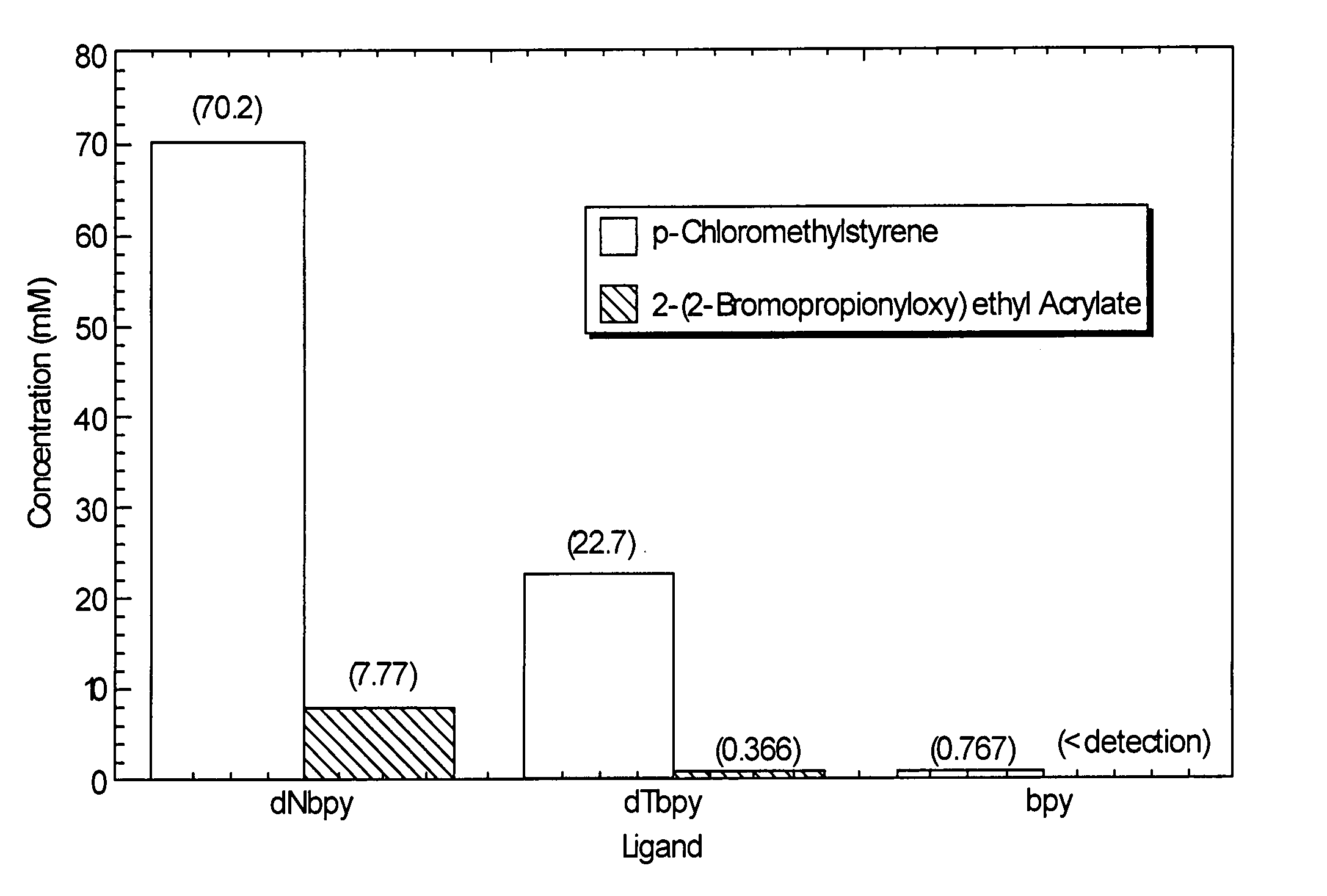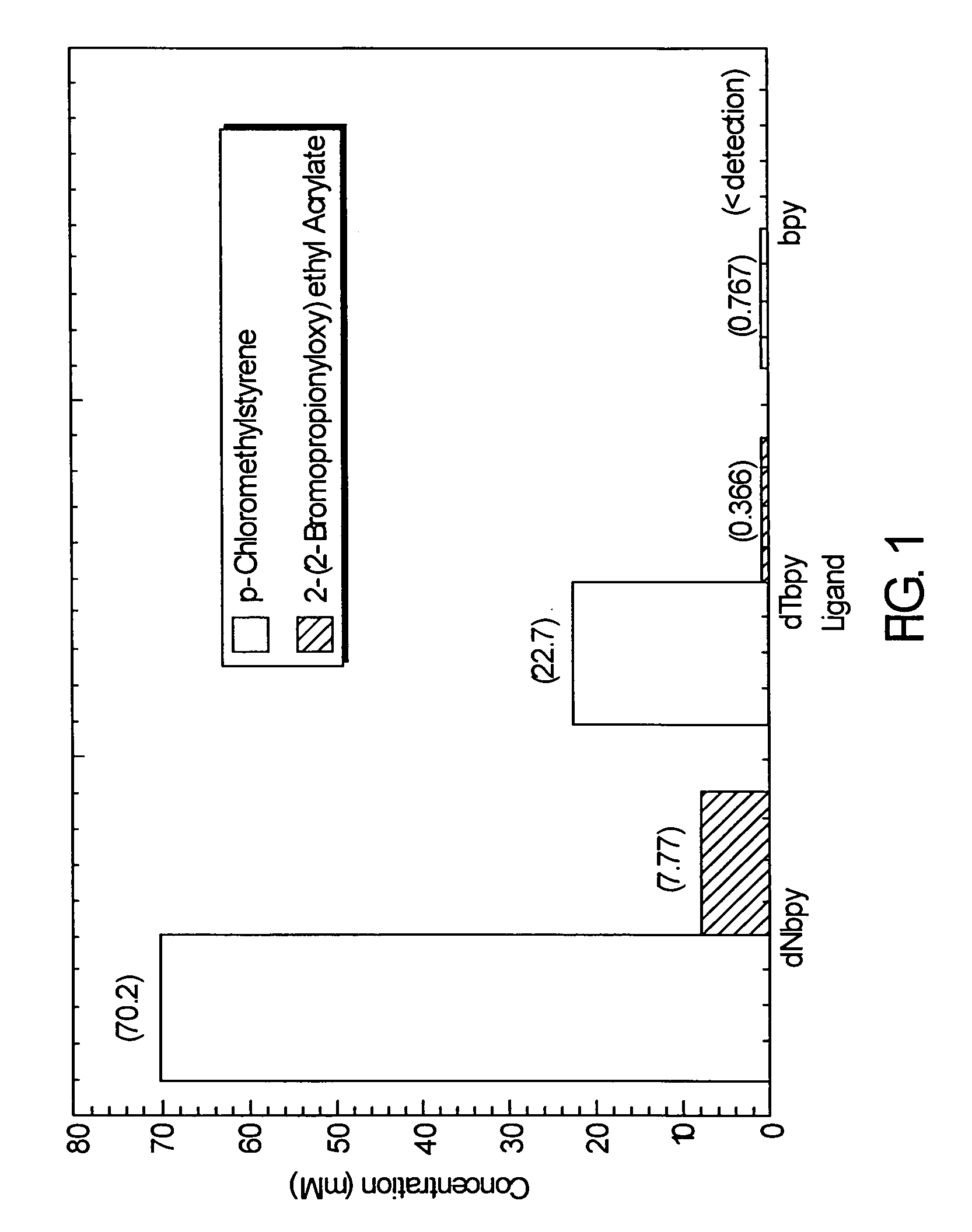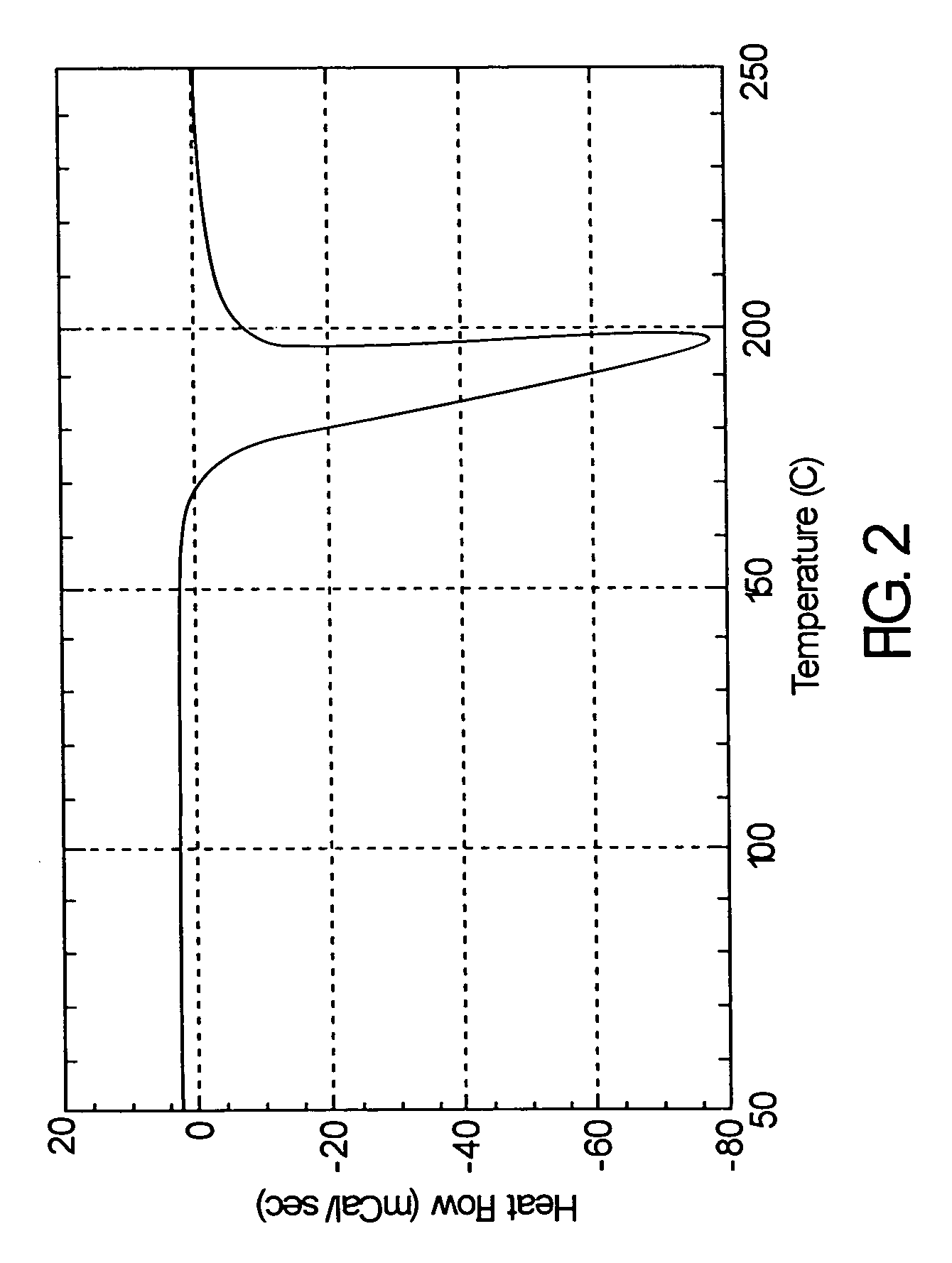Atom or group transfer radical polymerization
a radical polymerization and atom technology, applied in the field of atom or group transfer radical polymerization, can solve the problems of difficult, if not impossible, to obtain random copolymers of two or more monomers, and the radical polymerization of vinyl monomers is very effective, and achieves the effect of controlling atrp reactions
- Summary
- Abstract
- Description
- Claims
- Application Information
AI Technical Summary
Benefits of technology
Problems solved by technology
Method used
Image
Examples
example 1
[0164]Bulk Polymerization of Styrene using Fe0 / PPh3: Iron powder (10 mg), triphenyl phosphine (69 mg), styrene (1.0 ml) and 1-phenylethyl bromide (12 μL) were charged to a dry glass tube. A stir bar was added and the contents of the tube were degassed by freeze-pump-thaw (3×). The tube was then sealed under vacuum and the tube placed-in an oil bath thermostatted at 110° C. for nine hours. The contents of the tube had become viscous. The tube was opened and the contents dissolved in THF. Conversion of the monomer was 70%. Mn=6,780; Mw / Mn=1.19.
example 2
[0165]Bulk Polymerization of Styrene using Fe0 / NBu3: Iron powder (10 mg), tributyl amine (63 μL), styrene (1.0 ml) and 1-phenylethyl bromide (12 μL) were charged to a dry glass tube. A stir bar was added and the contents of the tube were degassed by freeze-pump-thaw (3×). The tube was then sealed under vacuum and the tube placed in an oil bath thermostatted at 110° C. for nine hours. The contents of the tube had become viscous. The tube was opened and the contents dissolved in THF. Conversion of the monomer was 62%. Mn=6,400; Mw / Mn=1.51.
example 3
[0166]Bulk Polymerization of Styrene using Fe0 / N,N-Dimethylformamide: Iron powder (10 mg), N,N-dimethylformamide (100 μL), styrene (1.0 ml) and 1-phenylethyl bromide (12 μL) were charged to a dry glass tube. A stir bar was added and the contents of the tube were degassed by freeze-pump-thaw (3×). The tube was then seated under vacuum and the tube placed in an oil bath thermostatted at 110° C. for nine hours. The contents of the tube had become viscous. The tube was opened and the contents dissolved in THF. Conversion of the monomer was 85%. Mn=8,960; Mw / Mn=1.33.
PUM
 Login to View More
Login to View More Abstract
Description
Claims
Application Information
 Login to View More
Login to View More - R&D
- Intellectual Property
- Life Sciences
- Materials
- Tech Scout
- Unparalleled Data Quality
- Higher Quality Content
- 60% Fewer Hallucinations
Browse by: Latest US Patents, China's latest patents, Technical Efficacy Thesaurus, Application Domain, Technology Topic, Popular Technical Reports.
© 2025 PatSnap. All rights reserved.Legal|Privacy policy|Modern Slavery Act Transparency Statement|Sitemap|About US| Contact US: help@patsnap.com



